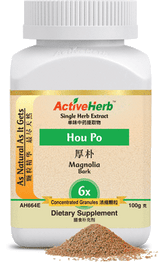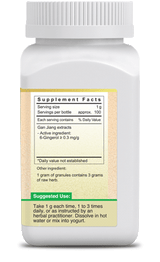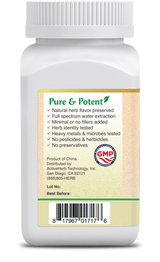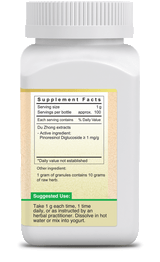Herbal Information for Hou Po 6X Concentrated Granules
Common Names: Magnolia Bark
Botanical Name: Cortex Magnoliae Officinalis, Magnoliaceae acuminata, M. virginiana, M. grandiflora, M. officinalis, M. liliiflora, M. denudata
Pin Yin Name: Hou Po
Other Names: Magnolia Tree, Blue Magnolia, Swamp Sassafras, Cucumber Tree, Lily Tree, Beaver Tree, Bourgeon Floral de Magnolia, Cortex Magnoliae Officinalis, Flos Magnoliae, Ho-No-Ki, Holly Bay, Hou Po, Indian Bark, Japanese whitebark magnolia, Magnolia Bark, Magnolia biondii, Magnolia denudata, Magnolia emargenata, Magnolia fargesii, Magnolia Flower Bud, Magnolia glauca, Magnolia heptaperta, Magnolia hypoleuca, Magnolia officinalis, Magnolia Rouge, Magnolia salicifolia, Magnolia sargentiana, Magnolia sprengeri, Magnolia wilsonii, Red Bay, Red Magnolia, Swamp Laurel, Swamp Sassafras, Sweet Bay, White Bay, White Laurel, Xin Ye Hua, Xin Yi Hua
Granule Composition: 90% extract + 10% dextrin
Package Size: 100 grams Extract granules
Form: 6X Concentrated Granules
Active Ingredients: Magnolol + Honokiol, 1.5 mg/g
Dosage: Take 1 g each time, 1 time per day, or as instructed by a herbal practitioner. Dissolve in hot water or mix into yogurt. Consult your healthcare professional for correct dosage.
Origin: China
Brand: ActiveHerb Single Herb Extract
Channels: Spleen, Stomach, Lung, Large Intestine
Property: Bitter, acrid, warm
Caution: Do not use if pregnant or nursing. Do not use in large doses. Overdosing may cause abdominal pain, diarrhea, and dry mouth
Benefits of Hou Po
- Promotes Qi circulation
- Promotes in eliminating distention and fullness
- Aids in warming and transforming phlegm
- Aids in moving Qi downward and resolves distension
- Supports with drying dampness in lungs
Hou Po bark and roots of the magnolia tree have a long standing in traditional Chinese Medicine for healing and calming upset stomachs, asthma, and vomiting. Magnolia bark is often used holistically to calm anxiety, aid sleep, and aids in countering depression.
Constituents: Magnolol, Honokiol, Eudesmol, isomagnolo, tetrahydromagnolol, magnal-dehyde B, C, D, E, magnolignan A, B, C, D, E, F, G, H, I, syringaresinol, alkaloids, magnocurarine, and volatile oil, which contains eudesmol, α-pinene, β-pinene, p-cymene.
How to Use Different Types of Herbs

References:
https://pubmed.ncbi.nlm.nih.gov/27721050/
https://www.ncbi.nlm.nih.gov/pmc/articles/PMC5365644/
https://tcmwiki.com/wiki/hou-po
https://www.healthline.com/nutrition/magnolia-bark#1




















